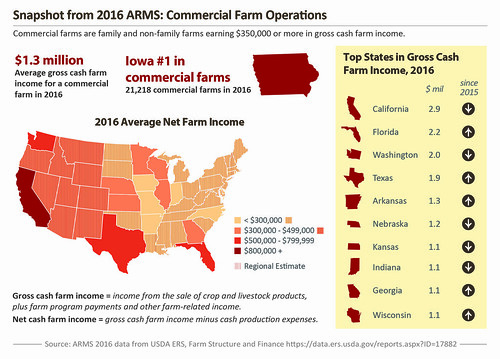
In December, NASS launched the 2017 Census of Agriculture, which counts all American producers across the country – about 3 million currently – every five years. Almost 35,000 of those producers instead received the Agricultural Resource Management Survey (ARMS), which looks at the financial health of America’s farm sector.
A producer who completes the ARMS survey is exempt from having to fill out the Census of Agriculture. ARMS asks many of the questions the Census does as well as more detailed financial questions. Results of ARMS helps evaluate the financial effects of numerous USDA programs and others. Results also look at farm income, conservation practices, and adoption of new farm technologies.
NASS will publish the farm economic data in the annual Farm Production Expenditures report, to be released online August 2, 2018. The Economic Research Service (ERS) also uses the data from ARMS to show farm household and financial performance in the America’s Diverse Family Farms publication.
The ERS conclusions primarily focus on the “family farm,” or any farm where the majority of the business is owned by the principal operator—the person most responsible for running the farm—and individuals related to the principal operator. USDA defines a farm as any place that produced and sold—or normally would have produced and sold—at least $1,000 of agricultural products during a given year.
The data show that farm households in general are neither low income nor low wealth. Only 38 percent of farm households had income less than the median for all U.S. households in 2016, and 3 percent had wealth less than the U.S. median. Small-farm households rely heavily on off-farm sources for their income, so general economic policies—such as tax or economic development policy—can be as important to them as farm policy.
Federal crop insurance has grown in importance over the past 25 years, increasing its share of farm financial assistance to 31 percent by 2016. Policy emphasis has shifted to a greater reliance on risk management and less reliance on income support through commodity programs.
Farm data, provided by producers through the Census of Agriculture and the Agricultural Resource Management Survey, is an important component in measuring the farm financial health and rural prosperity across America. Completing the agriculture census or survey is important.
